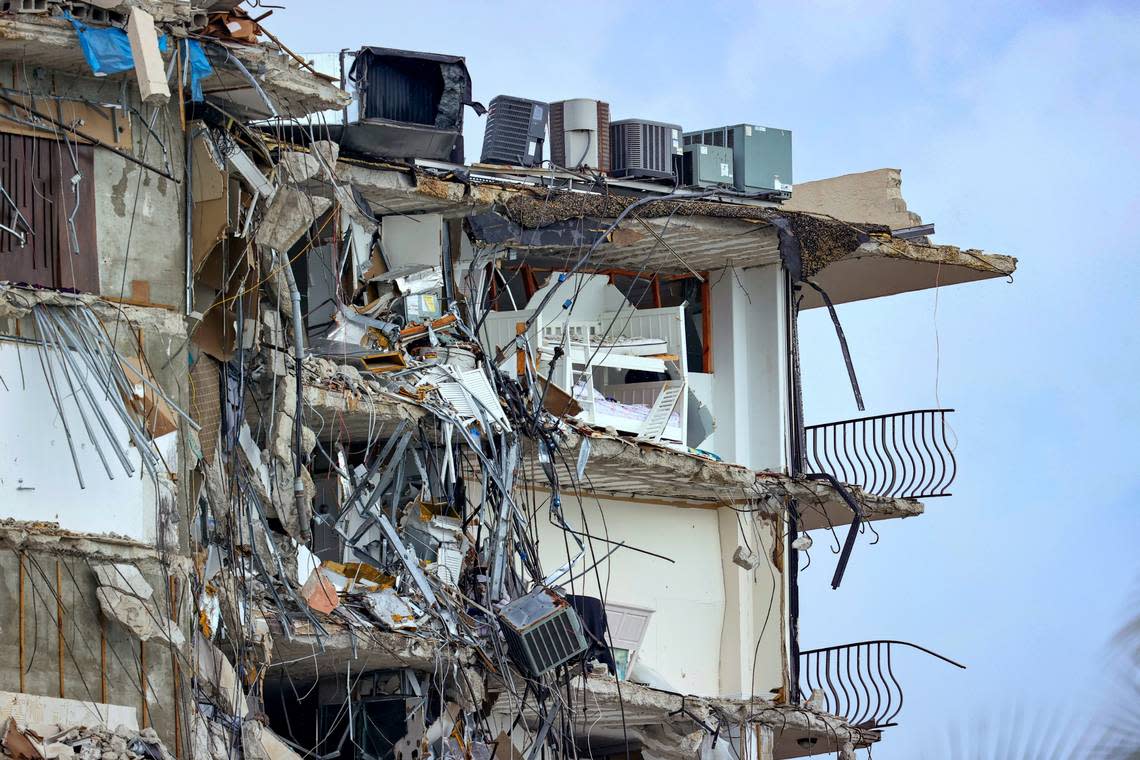No cause for Surfside collapse yet, but condo life in Florida has been transformed| Opinion

Three years ago this week, on June 24, 2021, South Florida awoke to an unthinkable tragedy: the partial collapse of the 12-story Champlain Towers South condominium building in Surfside, which swallowed in the rubble 98 lives. Many of the victims had been sleeping safely in their beds at the time of the 1:22 a.m. fall.
Even today, the death count is still difficult to comprehend. Our thoughts are with those who lost loved ones, parents, children, grandparents, and grandchildren. The youngest victim was one year old, the oldest was 92.
The tragedy also changed all of us. Sadly, we can never again think of Surfside as a sleepy, quaint beachside community or live in a condo and not worry about its structural health.
Three years later, federal investigators with the National Institute of Standards and Technology, tasked with finding out why the building partially collapsed, have yet to complete their probe. They have identified possible points of failure in the building and have narrowed down about two dozen hypotheses about what could have triggered the collapse.
Among those, the building’s swimming pool deck—located at ground level above an underground parking garage—collapsed at least four minutes before the rest of the building. And in the aftermath, it was revealed that the building had been in a state of disrepair that had gone unaddressed for years.
The Surfside tragedy was a wake-up call for the state of Florida and exposed major flaws in building code regulations and condo association governance. Since the 2021 collapse, the Florida Legislature has overhauled building inspection laws and empowered condo owners with new rights and protections designed to prevent such a catastrophic event from ever happening again.
Perhaps the biggest change was the passage of the new Condominium Safety Bill in 2022. The legislation strengthened condo association rules by requiring associations to hire structural engineers to inspect buildings every 10 years once they reach 30 years old.
Engineer reports must be submitted to both the association and local officials. Reserve funds must also be allocated specifically for structural repairs. These new rules prevent issues from falling through the cracks as they apparently did at Champlain Towers South.
And, the bill gave condo owners more authority over association boards. Boards can no longer ignore engineer-recommended repairs and owners have new rights to call emergency meetings to address safety problems. Should boards still fail to act, owners can now petition courts to order repairs. These provisions empower owners to demand action rather than hope their boards will properly maintain buildings and protect residents.
At the local level, cities and counties across Florida have also revamped building inspection laws. Surfside passed some of the strictest rules in the state, now requiring 40-year recertification of structures and detailed repair plans for aging buildings.
Miami-Dade also implemented new rules, such as establishing a condo safety task force and hiring more building inspectors. There is now greater oversight of older high-rises to try and catch maintenance issues early.
However, there has been a financial backlash for condo owners. Residents of older condos coming up for their 40-year inspections have been financially unprepared for the staggering costs and have been hit with huge assessment bills they cannot afford. Some have been forced to sell their condos. Unintended consequences of the tragedy. Lawmakers also need to address this intense burden falling on condo owners.
Despite those setrbacks, some experts argue more must still be done to bring South Florida condos up to snuff. A few are calling for mandatory 50 or even 100-year recertification of Florida high-rises, similar to rules in cities like New York City.
And with sea level rise and coastal erosion threats worsening due to climate change, some say current 40-year requirements do not ensure long-term safety.
Costs may be higher but lives could be saved. This debate will likely continue as the new regulations cover more buildings near that 40-year mark.
Overall, the Surfside collapse exposed deep flaws but also resulted in many positive changes over the past three years.
Condo owners now have more power over associations, and local building codes have been strengthened with new inspection rules, even if it comes at a financial cost.
Federal investigators say they likely won’t have the final results of what brought down Champlain Tower South until 2025. We still need to know what happened that night.
But Miami-Dade and Florida are undoubtedly better prepared to prevent future tragedies. The 98 lives lost that day will hopefully not be in vain.


